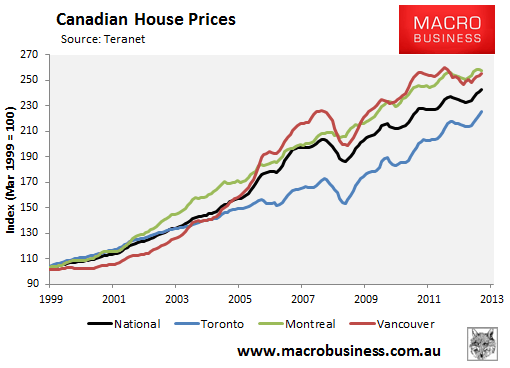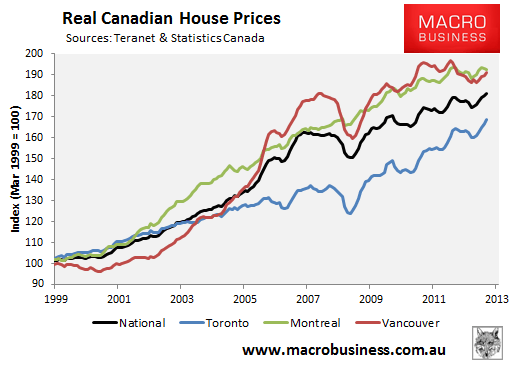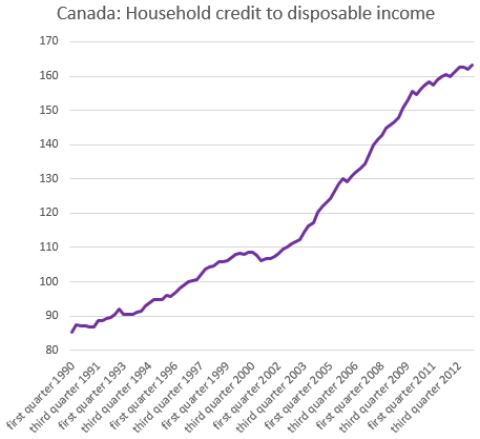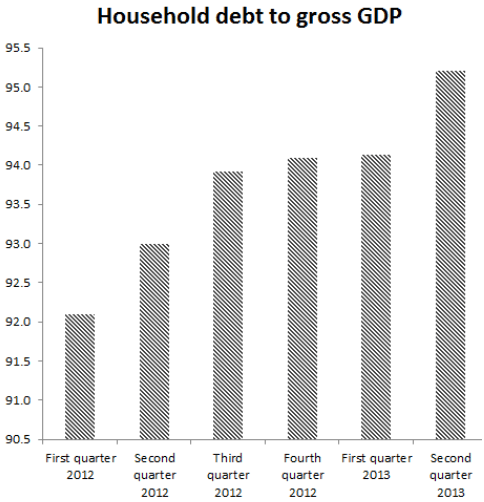
The Canadian housing market continues to reach for the stars.
After house prices fell for six consecutive months to February 2013, following the introduction of a range of macroprudential controls on high loan-to-value ratio mortgage lending, values have since for six straight months, pushing Canadian housing values to their highest level on record, according to the Teranet repeat sales index (see next chart).

August’s house price results, released on Friday by Teranet, showed house prices nationally rising by 0.6% and by 2.3% over the year, with values now 30% higher than their April 2009 low.
Looking at the major markets, a record high was recorded in Canada’s biggest market – Toronto – where prices rose by 1.2% in August. Canada’s third biggest city and bubbliest (and most supply-restricted) market – Vancouver – also registered 0.7% growth in July, although values remain 1.8% below their June 2012 peak. By contrast, values fell by 0.3% in Canada’s second biggest city – Montreal – to be just below last month’s record value.
In real (inflation-adjusted) terms, Canadian house prices also hit a new record high, again driven by Toronto, with Montreal still 0.5% below its July 2012 peak, and Vancouver still down 3.0% from peak:

Anyone looking for the fuel behind Canada’s rising house prices only needs to consider the below charts, which come from Sober Look.
First, household debt to disposable income hit a new record in the third quarter, and now totals over 160% (see next chart).

Similarly, household debt levels are rising as a fraction of GDP:

Of concern, much of this increase in debt is due to seniors carrying debt into retirement:
The increase in debt among seniors was the biggest year-over-year of all age groups.
Jeffrey Schwartz of Consolidated Credit Counseling Services of Canada says the finding on seniors’ debt is in line with other reports that show bankruptcies among retirees is on the rise.
“That’s what scary about this,” he said. “Seniors are carrying more debt into retirement. They are trying to maintain a lifestyle they had pre-retirement but on post-retirement income, and if income has dropped, they are increasing their debt to cover off their spending. It’s a very dangerous strategy.”
He added another possible cause is that seniors are supporting their grown children in greater numbers.
It’s hard to see how such a situation is sustainable.

